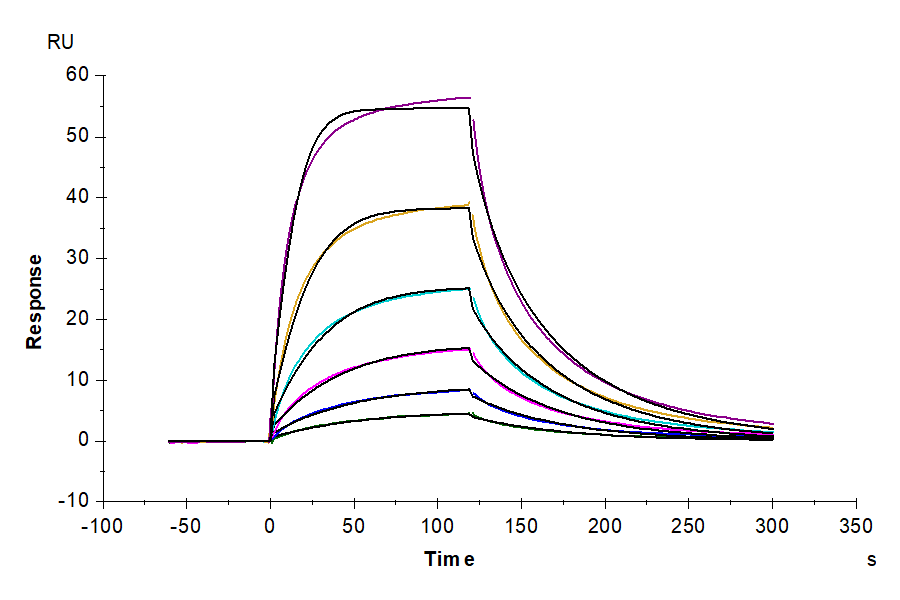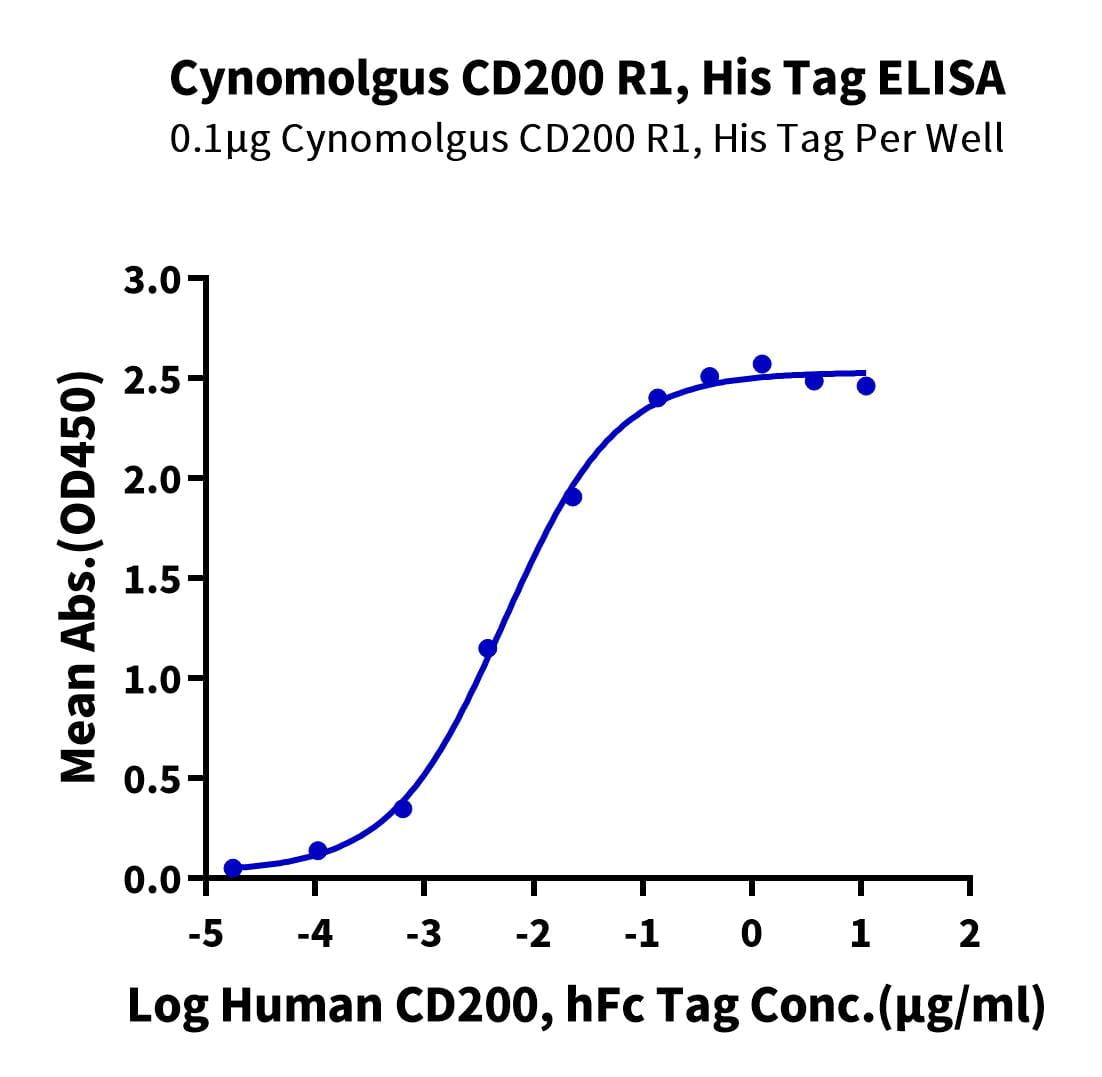| Weight | 1 lbs |
|---|---|
| Dimensions | 9 × 5 × 2 in |
| accession | XP_005548207 |
| express system | HEK293 |
| product tag | C-His |
| purity | > 95% as determined by Tris-Bis PAGE;> 95% as determined by HPLC |
| background | CD200Fc, a chimeric molecule including the extracellular domain of CD200 and a murine IgG2a Fc region, regulates immune responses following engagement of a cell surface receptor, CD200R, expressed on cells of the myeloid and T cell lineage. A recent report focused attention on a family of CD200Rs, but concluded that only one member used CD200 as its ligand. |
| molecular weight | The protein has a predicted MW of 28.09 kDa. Due to glycosylation, the protein migrates to 67-77 kDa based on Tris-Bis PAGE result. |
| available size | 100 µg, 500 µg |
| endotoxin | Less than 1EU per μg by the LAL method. |
Cynomolgus CD200 R1/CRTR2 Protein 3203
$315.00 – $1,050.00
Summary
- Expression: HEK293
- Functional: Yes (ELISA)
- Amino Acid Range: Glu25-Leu267
Cynomolgus CD200 R1/CRTR2 Protein 3203
| protein |
|---|
| Size and concentration 100, 500µg and lyophilized |
| Form Lyophilized |
| Storage Instructions Valid for 12 months from date of receipt when stored at -80°C. Recommend to aliquot the protein into smaller quantities for optimal storage. Please minimize freeze-thaw cycles. |
| Storage buffer Shipped at ambient temperature. |
| Purity > 95% as determined by Tris-Bis PAGE |
| target relevance |
|---|
| CD200Fc, a chimeric molecule including the extracellular domain of CD200 and a murine IgG2a Fc region, regulates immune responses following engagement of a cell surface receptor, CD200R, expressed on cells of the myeloid and T cell lineage. A recent report focused attention on a family of CD200Rs, but concluded that only one member used CD200 as its ligand. |
| Protein names Cell surface glycoprotein CD200 receptor 1 (CD200 cell surface glycoprotein receptor) (Cell surface glycoprotein OX2 receptor 1) |
| Protein family CD200R family |
| Mass 39041Da |
| Function Inhibitory receptor for the CD200/OX2 cell surface glycoprotein. Limits inflammation by inhibiting the expression of pro-inflammatory molecules including TNF-alpha, interferons, and inducible nitric oxide synthase (iNOS) in response to selected stimuli. Also binds to HHV-8 K14 viral CD200 homolog with identical affinity and kinetics as the host CD200. {ECO:0000269|PubMed:12960329}. |
| Subellular location [Isoform 1]: Cell membrane; Single-pass type I membrane protein.; [Isoform 4]: Cell membrane; Single-pass type I membrane protein.; [Isoform 2]: Secreted.; [Isoform 3]: Secreted. |
| Tissues Expressed in granulocytes, monocytes, most T-cells, neutrophils, basophils and a subset of NK, NKT and B-cells (at protein level). Expressed in bone marrow, lymph nodes, spleen, lung, liver, spinal cord, kidney. Expressed in monocyte-derived dendritic and mast cells. {ECO:0000269|PubMed:12960329}. |
| Structure CD200 and CD200R1 interact via their respective N-terminal Ig-like domains (By similarity). Interacts with Human herpesvirus 8 vOX2 protein. {ECO:0000250}.; (Microbial infection) Interacts with human herpesvirus 8/HHV-8 protein vOX2/K14. {ECO:0000269|Ref.2}. |
| Target Relevance information above includes information from UniProt accession: Q8TD46 |
| The UniProt Consortium |
Data
Publications
Publications
| pmid | title | authors | citation |
|---|---|---|---|
| We haven't added any publications to our database yet. | |||
Protocols
| relevant to this product |
|---|
Documents
| # | ||
|---|---|---|
| Please enter your product and batch number here to retrieve product datasheet, SDS, and QC information. | ||


















